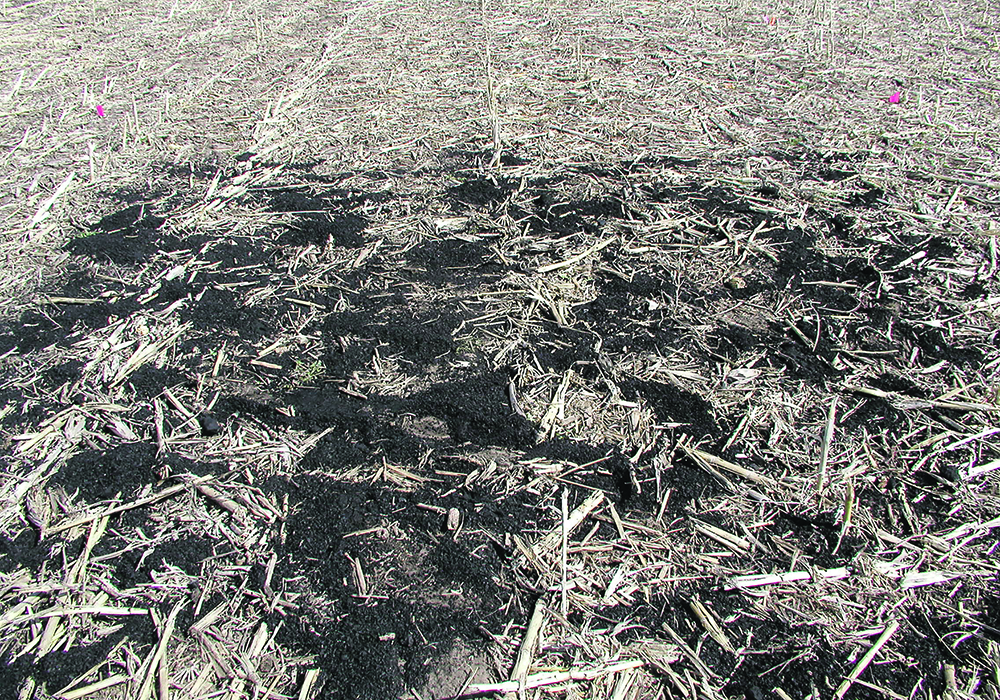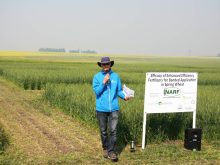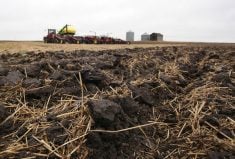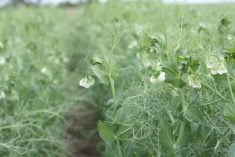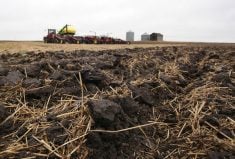Enhancing systems that produce and apply biochar as crop amendments should be a focus of carbon sequestration policies, according to a University of Alberta researcher.
Cole Gross, doctoral candidate in soil science at the university, conducted a three-year field study comparing one-time additions of manure compost and biochar to assess their effects on soil organic carbon and greenhouse gas emissions.
“The application of biochar rather than its manure compost feedstock increased surface soil organic carbon sequestration and mitigated greenhouse gas emissions relative to the control,” Gross said during a presentation at the College of Agriculture and Bioresources Soils and Crops virtual conference.
Read Also
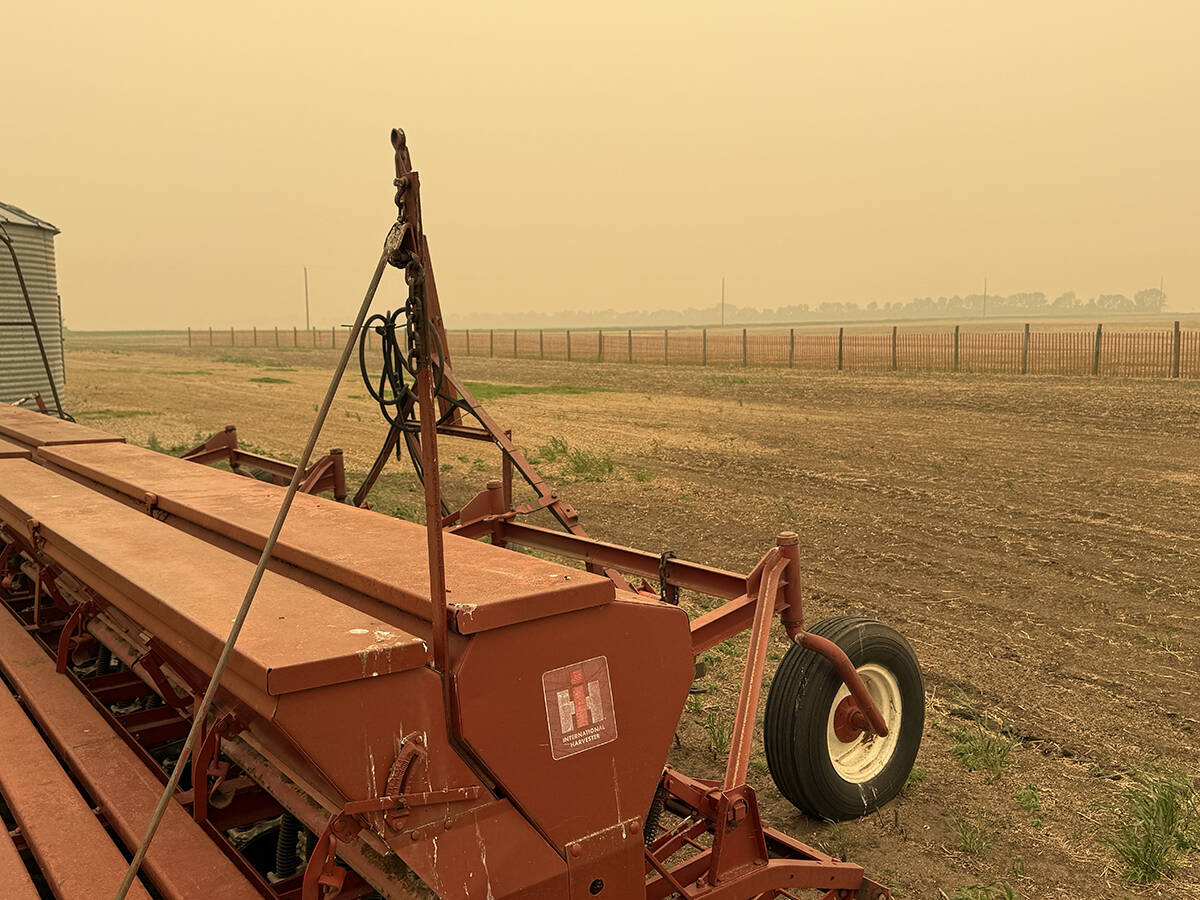
Wildfires have unexpected upside this year
One farmer feels smoke from nearby wildfires shrouded the July skies and protected his crop from the sun’s burning rays, resulting in more seeds per pod and more pods per plant.
Manure management accounts for a substantial portion of greenhouse gas emissions from agriculture and it’s a common practice to use livestock manure to fertilize cropland soils.
Applying organic amendments including manure to soil can increase soil organic carbon storage and reduce greenhouse gas emissions generated by agriculture.
“However, biowaste is not necessarily the best tool for mitigating climate change because their carbon can be readily decomposed in these cropland soils,” Gross said.
“Biochar has been shown to reduce greenhouse gas emissions particularly nitrous oxide, as well as to increase soil organic carbon protection and storage such as by increasing retention of carbon inputs from roots and increasing soil aggregation and stability, which provides physical protection of carbon from the soil microbiome.”
Biochar can persist in the soil for centuries after being added.
In the study, manure compost was used as a feedstock for biochar production.
The biochar was then compared to raw manure compost to measure the differences between the two organic amendments.
A one-time addition of manure compost as well as biochar was compared to a control.
Manure compost and biochar treatments were applied at equivalent carbon rates and tilled into the top 10 centimetres of soil.
Dark static chambers were used to collect gas samples during the growing season.
“Soil organic carbon and total nitrogen calculations were performed on a mass basis, meaning that we compared carbon and nitrogen within equivalent soil mass layers rather than fixed steps to help overcome biases that are created by soil surface disturbance due to the treatments,” Gross said.
Information was collected on soil moisture, temperature as well as the standing crop biomass.
In the top 10 cm of soil, biochar increased carbon sequestration.
“Two years following the treatment application we found that biochar addition increased surface soil organic carbon relative to the control. This was an increase of 12 megagrams per hectare. However, we only added seven megagrams per hectare originally when we applied the treatments. This means that there was a carbon sequestration in the biochar treatment and this was at a rate of 2.5 megagrams per hectare per year.”
No treatment effects were found on soil organic carbon levels in soil depth of 10 cm to 100 cm.
For greenhouse gas emissions, the manure treatment increased annual greenhouse gas emissions by 34 percent on average relative to the biochar treatment.
“In year three, biochar addition reduced annual greenhouse gas emissions by 19 percent relative to the control. These differences in greenhouse gas emissions were primarily due to differences in carbon dioxide emissions where we had the same patterns of significant differences between the treatments.”
In the first year of this study, biochar also increased methane uptake relative to manure compost.
This increased methane uptake corresponded to a decrease in surface soil water content for the biochar in the first year.
Gross said there are several potential reasons why biochar increased soil organic carbon sequestration.
“Such as enhanced root activity and exudation and increased sorption of dissolved organic carbon including onto biochar surfaces. For example, we found that biochar addition decreased surface soil water soluble nitrogen relative to the control in the fall. This may indicate that biochar adsorbed nitrogenous microbial derived carbon residues during the growing season,” Gross said.
He said biochar may have contributed to increased soil organic carbon protection mechanisms in the surface soil.
“Biochar is fostering the formation of stable silt size clay aggregates and that these stable silt size clay aggregates are also less susceptible to disruption in the rhizosphere relative to the control,” Gross said.
He said another mechanism through which biochar has been found in other studies to increase soil organic carbon protection, is the reduction of microbial and carbon degrading enzyme activities.
The manure treatment had increased carbon dioxide emissions over the first two years, and similar soil organic carbon stocks relative to the control.
So, much of the initial carbon in the applied manure was likely lost via microbial respiration.
No treatment effects were found when it came to the above ground biomass of the wheat, barley or canola grown in the study.
“However, the measured effects of biochar addition on the surface soil, such as increased soil organic carbon, increased nitrogen and increased pH are expected to help foster sustainable agriculture by promoting increased soil nutrient and water holding capacities and enhancing nutrient availability for crop uptake in the long term,” Gross said.


